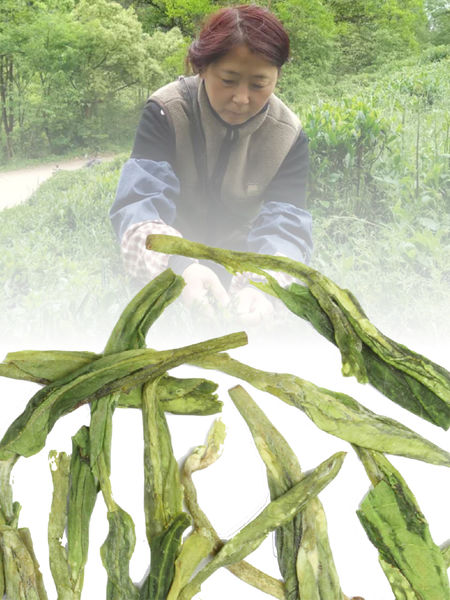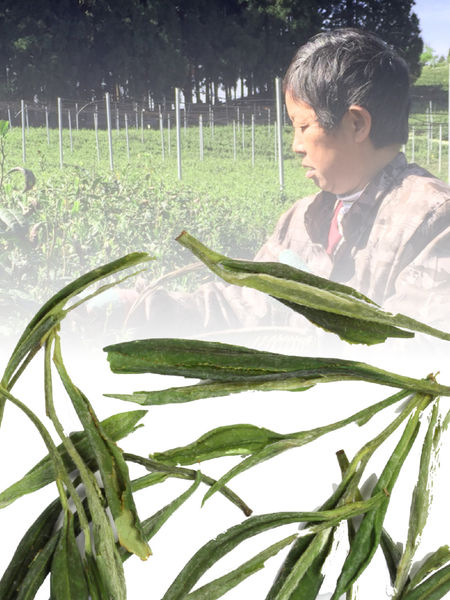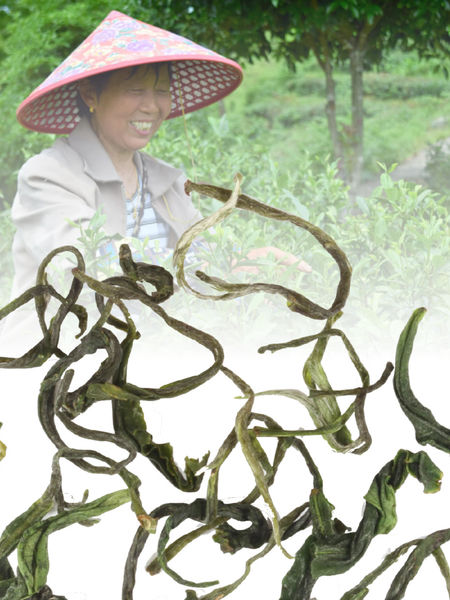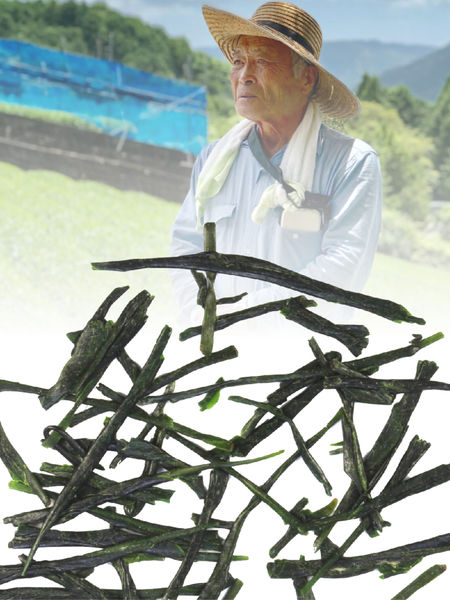Tea Spotlight: 4 Fantastic Masters




Da Fo Long Jing
Da Fo Long Jing is grown in the legendary Long Jing area of Zhejiang Province in Mainland China. Named for the Da Fo Temple in Eastern Zheijiang, this Masters Tea selection is a perfect introduction to those unfamiliar with China greens and a superior choice for connoisseurs.
Da Fo Long Jing's name translates to Big Buddha Dragon Well. Perhaps no China green tea is more fabled than Long Jing, and its varieties are as legendary as the Dragon’s Well area where it originated. Although Long Jings are grown today in several provinces, from Anhui to Shandong, our stellar Da Fo Long Jing is a true classic from Zheijiang, and represents the genuine Long Jing in appearance, fragrance, and most importantly, taste.
ORIGIN: Da Fo Long Jing is grown by esteemed Master Tea farmer Liu Yi Qian from young (eight-year-old) trees that are descendants of the Long Jing No. 43 cultivar. The trees grow at an elevation of 750 meters in Xin Chang in the province of Zhejiang. This fresh (April 2019) harvest provides an astonishing seven infusions, giving you not only continuous drinking pleasure but an incredible value.
THE LEAF: Once harvested, the tender leaves, usually the top 1 or 2 tender leaves and the bud, are placed on the classic bamboo trays where they will be left to air dry (wither) for approximately two hours to remove enough moisture to make the leaves pliable for shaping. Fired in classic stone woks, the leaves are vulnerable to heat and movement, so only the most knowledgeable hands of a veteran tea master like Qian can handle these teas. Qian’s expertise provides the knowledge to know how much to move them, and when, to insure that these tender shoots receive the heat completely and evenly for the best taste in the cup. The result of this careful firing is a leaf that is lightweight, elegantly long and flat, and voluminous.
HOW TO BREW: Because of their size, it is best to weigh Da Fo Long Jing rather than measuring them in a scoop or spoon. Our suggested weight is 2 grams per 8 oz. of water, more or less to taste. It is always better to err on the side of too little steeping; one can always brew longer. We suggest you begin by brewing the leaves at 170°F. for 3 minutes, longer for subsequent tastings, as desired. Use water from a natural spring as close to where you live as possible. Flat mineral water is also a good choice. Tap water should be avoided but if you must use it, make sure your tap is attached to a purifier for the cleanest, purest taste.
THE TASTE: Like all Long Jings, this is a green tea with a decisive character of satisfying sweetness balanced with a light body. Its complexity reveals light floral notes and a rumor of chestnuts. A delicate aftertaste is sustained throughout multiple brewings making this a perfect tea any time of the day.
CAFFEINE: Moderate level.
Huang Shan Mao Feng
Often considered in every aficionado’s Top Ten Teas list, Huang Shan Mao Feng is grown at 800 meters in She County in Anhui Province. This green tea has everything to please the novice and connoisseur alike: beautiful leaves, light floral fragrance, and a lingering taste that intoxicates the senses. Traditionally harvested during the Qing Festival, it is a prized spring harvest tea.
ORIGIN: Anhui Province has the ideal tea-growing conditions: high altitude, cool weather, and just enough clouds to provide abundant rain to nourish the tea trees. Modern Mao Feng dates to the 1800s, and was so named because the downy leaves themselves resemble the Huang Shan Mountain. Our source comes from Liao Xiao Juan, a third generation tea farmer who has worked in tea for 30 years.
THE LEAF: Often described as akin to orchid buds, the leaves for Mao Feng are long needle-like green and covered with downy white hairs which is how it got its name. Harvested in April during the Qing Ming Festival, the fresh leaves have a distinctive orchid-like floral overtones and dark/medium green color. Only the bud and top two leaves are plucked and processing is done the same day, involving withering, steaming, rolling, and baking to shape the leaves. Our selection is from plants only four-years-old.
HOW TO BREW: Farmer Liao Xiao Juan suggests brewing in a glass vessel to see the leaves “dancing in the cup.” The infusion will be a pale yellow-green with a similar floral aroma to the dry leaf. Expect 7 infusions which makes this both a bountiful tea-tasting experience and a great value. Steep at cooler temperatures, such as 170° F. for 2-3 minutes, longer for subsequent infusions.
THE TASTE: The taste is soft with a satiny texture and light notes of fruity lychee and delicate grass. The full-mouth feel of the tea is enormously satisfying even after many infusions. As an alternative to brewing in glass, consider brewing the tea in a gaiwan (covered cup) and drinking from the cup rather than using it as a pouring vessel. This will greatly enhance the combination of floral fragrance and ambrosial taste.
CAFFEINE: Moderate Level.
Yun Wu
ORIGIN: As Chinese legend goes, the Monkey King (aka Sun Wukong) grew bored with his normal fare of peaches and wine in his homeland, Huaguo Mountain (Mount of Flowers and Fruit and sought something new, like the Tribute Teas offered to the emperor and the Queen Mother. He entered the Jade Emperor’s Lingxiao Palace only to discover to his disappointment, there were teas to be found. Flying home, he was joined by a flock of birds who learned of his quest and agreed to help him. Harvesting tea seeds on nearby mountains, the birds traveled to the Monkey King's homeland and were awestruck by the beauty of Huaguo Mountain; so awed, they burst into song, their beaks fell open, and their precious cargo of seeds dropped to the peaks below. Fortunately, the seeds took root along the sides of this fertile mountain, and grew, and grew. Thus began what are now forests of tea trees amongst the “clouds and mist.”
While we cannot honestly say Yun Wu tea grows on the exact spots where the birds dropped the original tea seeds, our tea does indeed grow at a very high 1000 meters in the “sea of clouds” area of Huaguo Mountain in Zhejiang Province in China where the thick fog hydrates the trees as it also protects them from the harshest of rays from the sun.
THE LEAF: A large green tea leaf cultivar, known locally as “rolling Mao Feng,” grows on 20-year-old trees. The hand plucking includes only with 1 bud and 1 or 2 leaves, each 3cm long. The leaves are irregular, twisted, and often rolled up into small pellets or spiral shapes. Rather rare, these leaves are carefully produced in small quantities, and contain slightly more chlorophyll than other Chinese green categories affording an excellent taste profile in the cup.
HOW TO BREW: Farmer Zhao Bi Yun suggests that her Yun Wu be steeped with spring or mineral water at a low temperature, preferably 170°F. for 2-3 minutes. This selection is a great value, offering up to 7 infusions.
THE TASTE: The particular growing conditions of plenty of mist, extremely high altitude, and protection from the sun, provide leaves that give a uniquely layered cup with a light smoky essence topped with notes of fruit.
CAFFEINE: Moderate level.
Shincha Gyokuro
Shincha Gyokuro is a premier-grade green tea grown and processed in Japan. It is exceptional on all levels by which tea is measured: A lush green in the color of the dry leaf, an exquisite flavor that is silky sweet on the palate, and a long finish without any astringency or bitterness. The fragrance is intense and this high-quality example is a terrific value for its many infusions without loss of flavor.
ORIGIN: Our selection is from the Shizuoka Province in Japan and supervised by Farmer Mr. Oota. This venerable tea master carefully blends in the residual tea dust to give the cup the rich body for which it is famous. This combination of finely-wrought leaves and dust gives the tea a slightly cloud-light appearance that contributes to what many believe is the ultimate green-tea flavor, the umami, which is the Japanese accolade for when all ingredients combine to make a fifth taste of perfection. (The others are sweet, salty, sour, and bitter).
THE LEAF: The lush green leaves are plucked, gently steamed, and retain their intense forest-green color. Part of the exceptional color is the result of the leaves being covered from the sun so that the chlorophyll can be enhanced and increases the amino acids such as L-theanine. The leaves are elegant and long and create a liquid of beautiful pale green color in the cup.
HOW TO BREW: A remarkable 7 infusions will result from brewing the tea at 180°F. for 2-3 minutes. Subsequent steepings may be longer to elicit every drop of flavor. To enhance the visual pleasure, use either a bright white cup or a clear glass one to show off the “jade dew” that is this tea.
THE TASTE: The brewed cup will titillate the senses, first with an aroma of sweet greens and seaweed. The taste is redolent with a grassy flavor without any harshness or astringency, only a soft, delicate flavor in the mouth, with a balanced, delicate finish. This is a quintessential cup that balances energizing and soothing elements.
CAFFEINE: High level.
Check them all out at MastersTeas.com